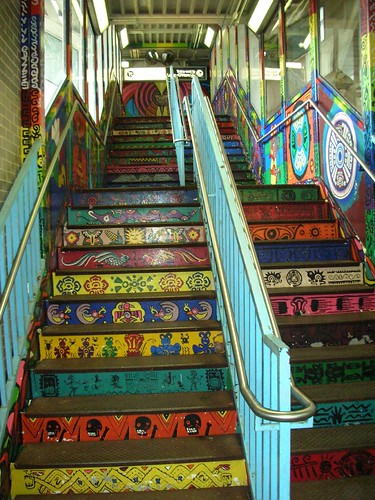 One of things I like when visiting a metropolis is its diversity: you can have lunch in Chinatown and dinner in Little Italy. Everywhere you walk, diversity surrounds you. I qualify as a 'diversity-seeker', a person who actively looks for diversity.
One of things I like when visiting a metropolis is its diversity: you can have lunch in Chinatown and dinner in Little Italy. Everywhere you walk, diversity surrounds you. I qualify as a 'diversity-seeker', a person who actively looks for diversity.But what exactly do I do with this diversity? And how does this inclination of seeking diversity translate in terms of social engagement, social practices and social ties?
Well, according to a recent study published in the Journal of Ethnic and Migration Studies, diversity-seeking may translate into ... well, consumption of diversity. But from consumption to engagement with difference it's a big step, one that involves challenging your own routines and values, re-adjusting your own expectations and practices, and striving to open yourself up instead of closing yourself down to difference.
Blokland and van Eijk (2009) have studied the residents of a small neighborhood in Rotterdam (the Netherlands), asking some pre-determined questions on their attitude to and engagement with diversity. The neighborhood in question is an ethnically diverse one, recently transitioning from being perceived as a 'bad' neighborhood to being perceived as a 'cool' one, with small shops and fancy restaurants.
Although the study itself remains limited by the pre-determined set of questions that were asked of people (we do not know how people themselves made sense of their own position in those neighborhoods and their own relation to diversity), it is interesting to see that what diversity-seeking often translates into is consumption:
Diversity-seekers frequented restaurants, bars and shops more intensely than other residents, but did not show more (or less) social or political engagement with local neighbourhood affairs than other residents.The article itself is responding to Richard Florida's now famous discussion of the rise of a new middle-class, the creative class, roughly defined by its involvement in creative industries. The creative class, Florida contends, is more inclined to be tolerant and to seek diversity in their residential locations. But exactly what does 'seeking diversity' means remains an open question: just because one eats Chinese food and drinks Greek ouzo doesn't necessarily make that person more willing to question hi/er belief system and daily practices. Blokland and van Eijk (2009) echo this when they conclude that
a taste for diversity means little to social network diversity. As far as diversity is brought into the practice of daily life, using cmmercial neighborhood facilities is all that diversity -seekers do more... even for those who, whether middle-class or not, come into a mixed neighborhood with openness to diversity, this openness does not translate in more diverse networks (p. 327).
As I said, there are limitations to this study. In fairness, it sheds little light on how people actually relate to diversity, beyond statistically correlating their demographic data with their answers to some pre-determined questions that the authors take as measuring diversity in our lives. In my building, there are at least three or four recognizable ethnic groups. I do not socialize with my neighbors simply because the way I come to make friends involves an intellectual rapprochement, and it's hard to have that interaction with one's neighbors out of various reasons (including the Western attitude towards sharing an urban space). Yet, the study does bring forward an interesting observation: that consumption of diversity does not equal living with diversity.
Photo credits
Puroticorico
References: Blokland, Talja and van Eijk, Gwen(2009) 'Do People Who Like Diversity Practice Diversity in Neighbourhood Life? Neighbourhood Use and the Social Networks of 'Diversity-Seekers' in a Mixed Neighbourhood in the Netherlands', Journal of Ethnic and Migration Studies, 36: 2, 313 — 332





No comments:
Post a Comment